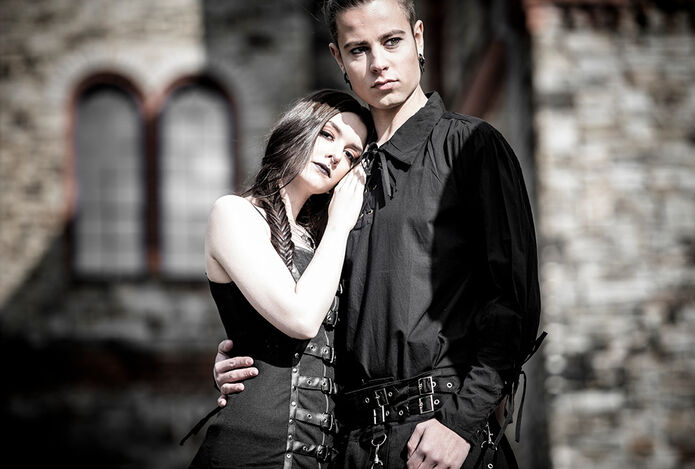The medieval Goth, as the symbiosis of a Goth and a medieval fan, does not exist. Here it is visually: either ... or! Goths like the Middle Ages and their music because they not only feel at home there because of the lived history, but also have a lot to gain from the music. Some goths therefore also cultivate a medieval alter ego and take part in medieval markets and camps themselves, cultivate their role-playing ambitions in LARP or are simply welcome visitors to medieval markets. If you ask the medieval traders, they describe the Goths as polite and quiet contemporaries who love to rummage through jewellery and drape them with all kinds of occult items. The medieval goth is therefore a goth who sometimes changes sides. Within the black scene, he is dressed like a normal goth.
Typical clothes
In his/her role as a medieval squire or damsel, the medieval goth wears simple linen clothes in quite vivid colours. However, he/she does not care about the "colourful" in this case because it is a disguise that is the means to an end. However, you can recognise the "dressed up" medieval goth by the typical scene features such as piercings and pikes, which replace the medieval beak shoes. In its natural environment, the black club, the medieval goth is only conspicuous by discreet little things, such as bells on the pikes.
Typical make-up
The medieval goth is often hardly recognisable in disguise because, unlike his natural appearance, he wears no make-up. Attentive observers may notice shaved eyebrows on the ladies, which can be an indication of extended scene affiliation.
Typical hairstyle
The hair is unstyled, covered with a cap or hat, or buried under a helmet or bonnet. The tousled "crow's nest" of the goth becomes a plait in the medieval setting. Only the sidecut or undercut gives a hint that the "knight" or "maid" otherwise lives in darker climes.
Typical music
The music connects the two scenes. There are countless bands that shine at medieval markets with an acoustic set and then score at the Goth festival with furious sounds. Subway to Sally, Schandmaul and In Extremo are popular representatives of medieval sounds. Bands like Faun and Qntal are even able to impress across scenes. While they perform classically at medieval markets, they show a different side with synthesizers and drum computers at gothic festivals.


